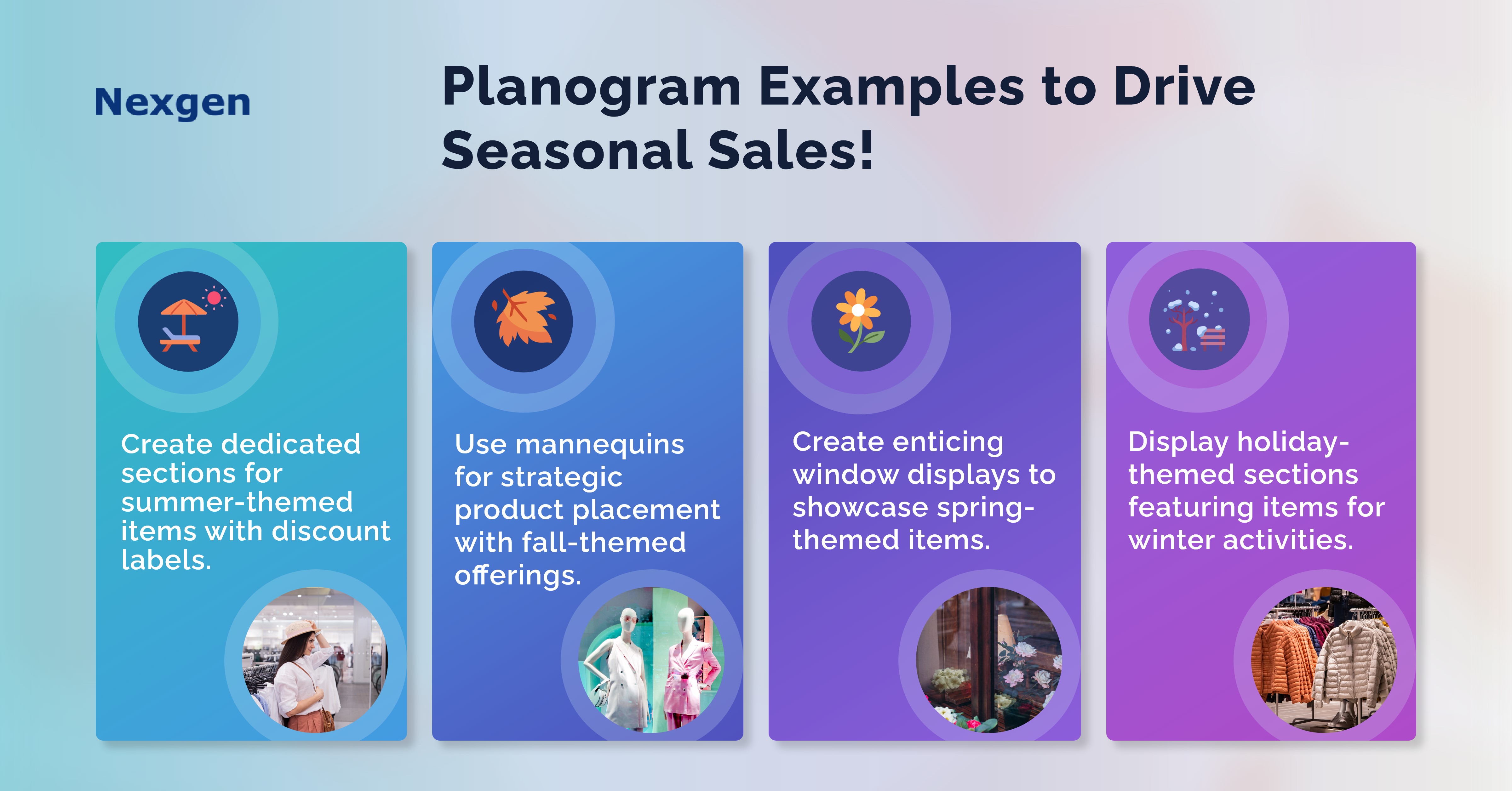Have you ever noticed that even before the summer, many retail shelves are already stocked with cotton clothes, refreshments, and beach towels? To be successful in this industry, retailers plan their products and marketing strategies months in advance. Seasonality plays a significant role in planning the retail cycle.
Everyone is aware of the four seasons and related weather patterns that influence customer shopping. Aside from apparent strategies such as seasonal clearance deals and updated inventory, few retailers understand how to benefit from a seasonal approach. The four seasons define the success of your store, during which your customers will choose products that fulfil their needs. Creating planograms can be a valuable tool in driving sales in retail stores throughout the year, including during the spring, summer, fall and winter seasons. Planograms ensure that retailers have a merchandise assortment targeted at customer preferences. In the USA, for example, some apparel stores offer woolen jackets in August, while stores in other regions provide shorts in January. For some reason, retailers find it difficult to create planograms for various seasons to ensure the items are properly displayed and readily available for shoppers. To avoid such situations, planogram manufacturers have come up with a new solution called planogram services that delivers high-quality and efficient shelf management solutions. This significantly increases sales, provides brand distinctiveness, and develops loyalty as customers return year after year. The following are some retail strategies for each season:

- Spring sales: After the bleakness of winter, spring brings sunshine, and it is the perfect time to refresh your planograms and create enticing seasonal window displays to lift the shopping experience of your shoppers. You can showcase spring-themed products and highlight items such as outdoor furniture, picnic accessories, and spring clothing. Categorizing products in visually appealing ways, such as using color coordination or creating themed sections, can help catch customer’s attention and encourage impulse purchases. Eye-catching signages or grouping complementary items can encourage shoppers to purchase multiple items.
- Summer sales:Summer is considered a slow season for most retail stores. It is because most shoppers are busy with vacations and spend less time buying items. As a result, shops take advantage of this occasion to offer a variety of promotional activities to attract new customers. You can create dedicated sections for discounted summer items or bundle deals with discount labels like ‘summer sale’ or ‘hot sale, 30% off’ to attract customers seeking good deals. With the help of planograms, categorize summer-related items like swimwear, beach towels, sunscreen, outdoor toys, and BBQ equipment near the store entrance or in high-traffic areas. Create cool and inviting displays that evoke the summer atmosphere. Use elements like colorful props, beach-themed decorations, and images of people enjoying outdoor activities.
- Fall season sales: It is the season of falling leaves and pumpkin spice! Whether you offer clothes, decor, candy, or anything in between, getting into the festive spirit is always a great idea to help your customers feel encouraged to spend. For example, place candies near checkout counters or other prominent and convenient shelves to increase the chances of impulse buying. You can use mannequins to display Halloween costumes to make your shoppers feel excited about the holidays. Use warm, earthy colors in your displays to create a cozy and inviting ambiance. Offer discounts on items like back-to-school supplies, Halloween decorations, or fall-themed food and beverages to drive impulse purchases. Displaying complementary items such as pairing fall clothing with accessories or offering recipe suggestions for seasonal ingredients, can increase sales by encouraging customers to buy related products.
- Winter sales: According to recent reports, in-store sales during the winter holidays account for 70% of the total profit. And every retailer knows it. You can drive customers into your store by creating an in-store experience so compelling with the help of planograms so that your shoppers can purchase. Set up holiday-themed sections, incorporating Christmas decorations, winter clothing, gift items, and seasonal treats to create a joyful atmosphere. You can also showcase limited-time offers, bundle deals, or discounts on winter-related products like winter coats, blankets, hot beverages, or holiday-themed merchandise to boost holiday sales. Create product displays featuring items for winter activities such as skiing or ice skating to inspire customers to make additional purchases.
Overview of Nexgen Planogram Services
Nexgen offers store-specific planograms for clients that optimize sales and achieve category objectives. We create customized planograms for your business to ensure that these are better aligned with your goals and merchandising strategies. Our expertise in planogram automation helps us build planograms faster, better and consistently. Whether it is creating a planogram from scratch, or a typical reset, we have the knowledge, tools, and experience to get the job done for you.
Get Your Free Trial Now!